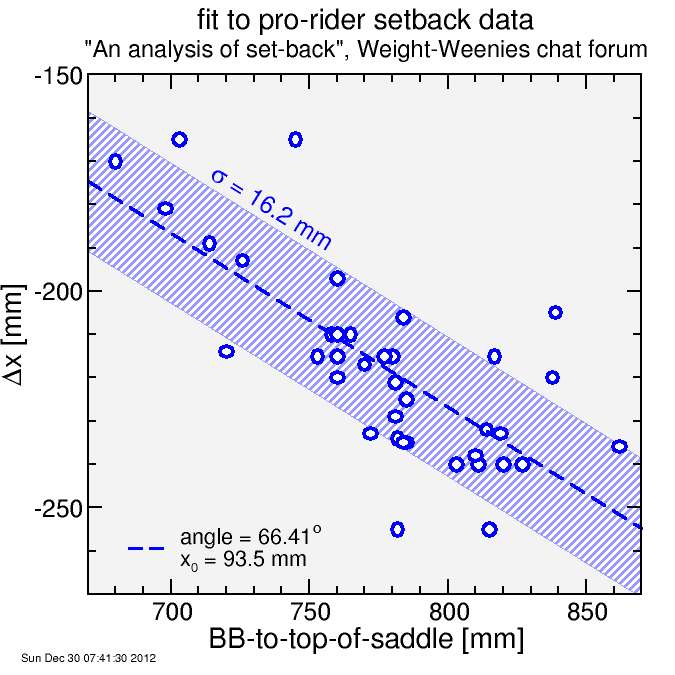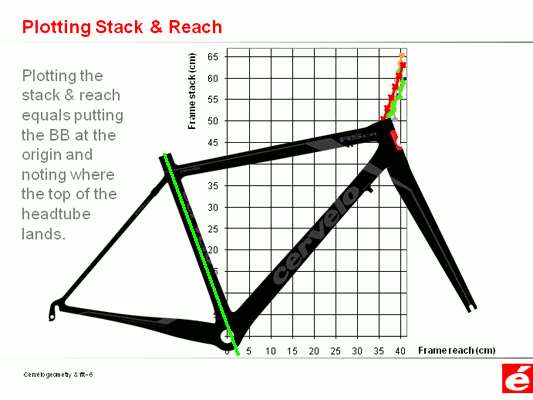fitting pro cyclist setback data, and forward-offset seat tubes
Selected pro cyclist setback data was posted on the WeightWeenies forum. The data are summarized in this spreadsheet.
Setback is measured to the tip of the saddle, while saddle height is measured to the top of the saddle. I converted setback to a value Δx, which is the position of the saddle center relative to the bottom bracket, where typical Δx < 0, using a 14-cm tip-to-center measurement from my stripped down SLR. I did a least-square fit of Δx versus saddle height, using as my fitting parameters the angle (measured in the same way seat angle is measured) and the offset. So if I wanted to build a bike which fit the riders the best, minimizing the root-mean-square adjustment of saddle position on the rails, I would use a seat tube angle of the listed angle and a seat tube set-back of the negative of the intercept x0.
Here's the result:

This is perhaps surprising: the angle is a super-slack 66.4 degrees and the saddle set-back is -93.5 mm. The RMS error is then 16 mm, so the typical rider would have his saddle positioned around 16 mm either forward or behind center.
An alternative to negative saddle set-back would be to displace the seattube forward of the bottom-bracket and use a zero-setback post. This is actually what Cervelo has done on several of their bikes, including the R5-CA (see my blog post here):

Cervelo R5-CA uses a seat-post offset forward of the bottom bracket
Obviously from the diagram, Cervelo's geometry is a much-tempered version of my numerical fit. Fortunately, however, bikes are build in multiple sizes, so there's no need for one-size-fits-all geometry.

Comments